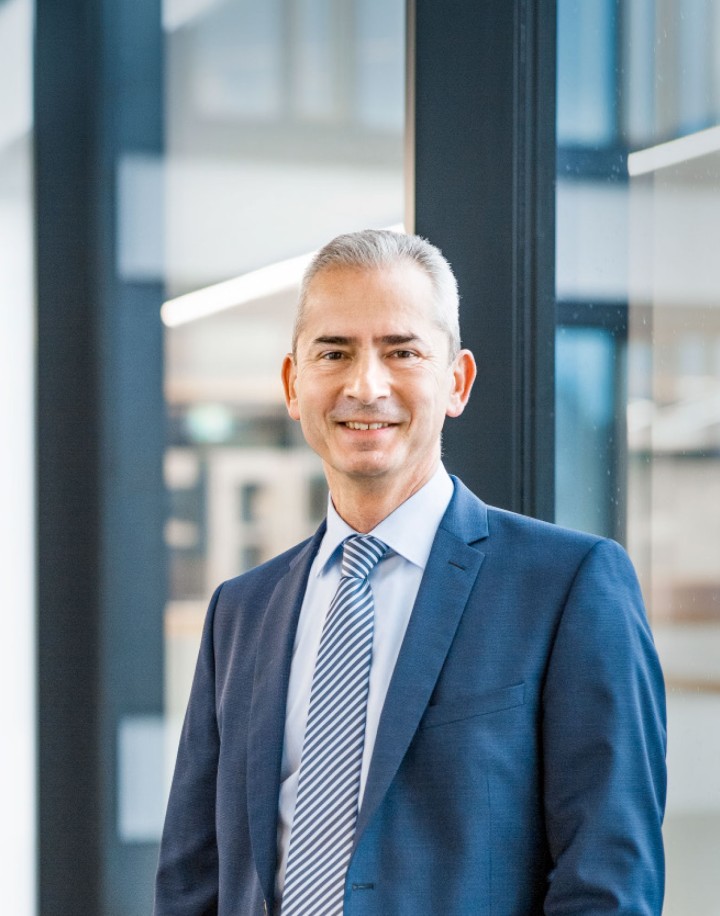Tailwind for a new mission

The world of energy is changing – and so is Amprion’s mission. Offshore development is just one example here. We spoke to Peter Barth, Managing Director of Amprion Offshore GmbH, about the importance of offshore wind power for Amprion and its employees.
Starting in 2028, Amprion will bring wind power onshore – an important step on the path to climate neutrality. How aware are you and your employees of the project's immense significance?
Peter Barth: Every megawatt-hour from renewable energies reduces our dependence on fossil fuels. We’re currently planning and building four offshore connections that will hopefully make a decisive contribution here. The significance of these projects motivates us tremendously – not least because Amprion’s efforts towards a climate-neutral energy system are backed up by real conviction. Where energy transition is concerned, our employees are determined to make a difference. This attitude is clearly noticeable in their daily work.
Following the groundbreaking ceremony, the construction phase for the first two offshore connection systems began last summer on Norderney. What's your verdict so far?
We’ve finally got going on the practical side. After three years of intensive preparations, it was a very special moment – particularly for our colleagues on site. It’s also thanks to them that the first construction phase was so successful – and of course, even the weather was in our favour. We managed to get the work done in the summer without any major interruptions due to rain or strong winds. We were really lucky in that respect. There are only a few weeks a year when building activities are permitted: in spring the birds are nesting and in the autumn storms render such work impossible. Precise planning is therefore paramount.
Every megawatt-hour from renewable energies reduces our dependence on fossil fuels. We’re currently planning and building four offshore connections that will hopefully make a decisive contribution here.

You work where others spend their holiday: How compatible were the construction measures with the holiday period?
Once again, precise planning was key. The formal procedure was completed early on, which meant we were able to prepare the site already in winter. A significant part of the material was consequently transported there outside the main tourist season. The upshot was less noise nuisance to summer tourists and more time available for the actual building work. This was the first time we’ve ever managed to drill four boreholes in the space of a year. The result was less overall impact on the island and real added value for people, animals and the environment.
The work is being carried out in a nature reserve. How do you take this into account on the construction site?
We’re working in a unique national park. We’re aware of this and we proceed as carefully as possible. First and foremost, the short construction time window protects the flora and fauna. As far as the actual building work is concerned, we follow the zero discharge principle: nothing is released into the environment that doesn’t belong there. A ten-metre-high noise barrier helps reduce the noise from the drill. We use minimally invasive methods to do the drilling. We also offset the impacts elsewhere – in this case by renaturing a 19-hectare salt marsh in the Norderland.
We’re working in a unique national park. We’re aware of this and we proceed as carefully as possible.

And what about acceptance for the project among local people?
It’s a special situation on Norderney. Our projects impact not only on the interests of residents but also on those of anyone who holidays on the island. We took this into account in our local communication strategy by inviting holidaymakers to our informational events. We explained who we are, why the pipelines are necessary and how we carry out the work. Acceptance is generally high – not least thanks to our proactive, early communication on the spot.

What does the future have in store for you and your team?
Our work certainly won’t get any less. That doesn’t deter us, though. We’ve already achieved a lot in the past. We started out with a small team just under four years ago. Today, there are more than 200 people working for Amprion’s offshore subsidiary. Their know-how and commitment will be crucial when we start building the converter platforms out at sea in the middle of the decade. It will all happen very fast then. More platforms and offshore pipelines will follow – and projects will often run concurrently. We’re on the lookout for more motivated individuals who’d like to make a contribution to the energy system of tomorrow.